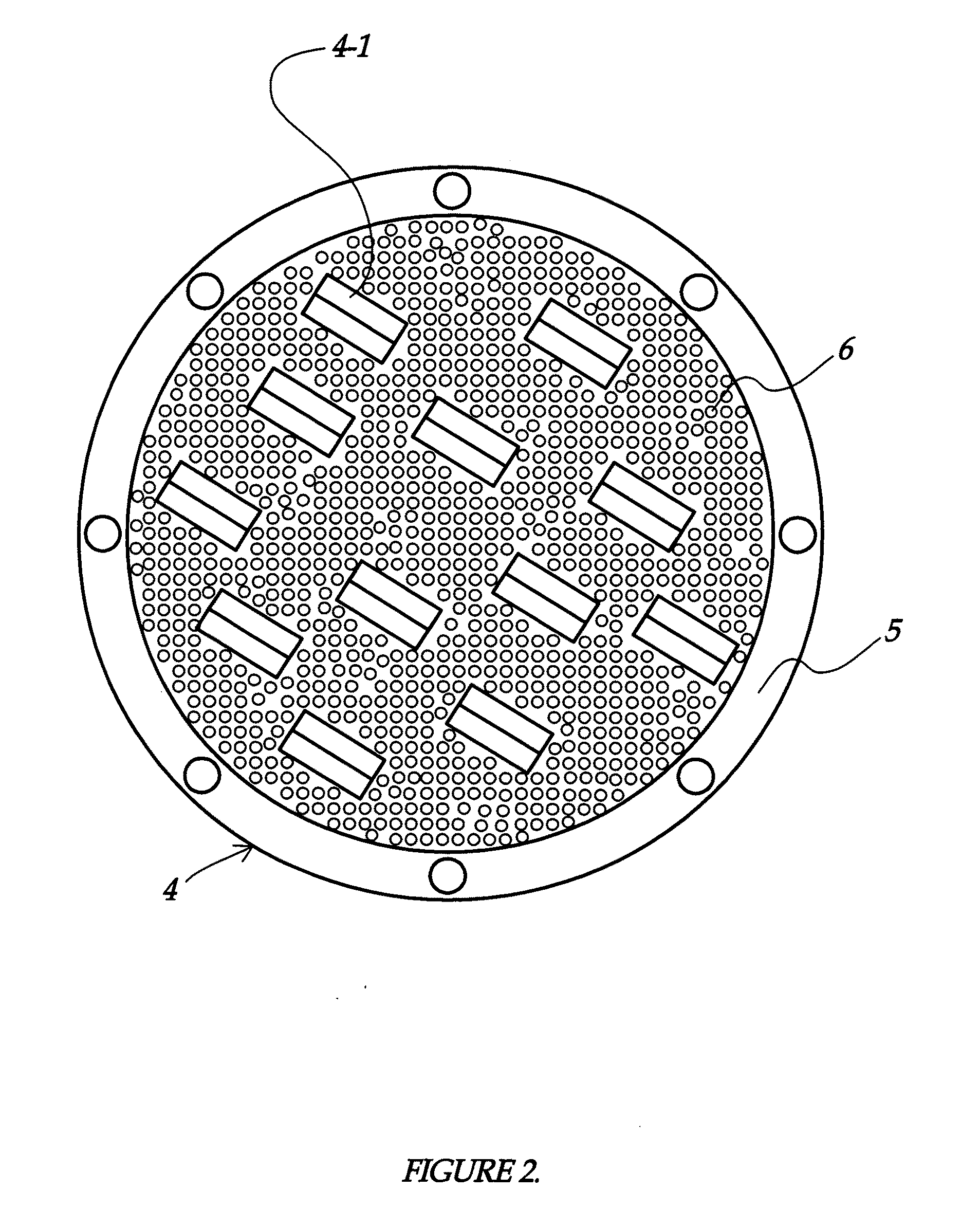Method of producing trichlorosilane (TCS) rich Chlorosilane product stably from a fluidized gas phase reactor (FBR) and the structure of the reactor
a technology of fluidized gas phase reactor and trichlorosilane, which is applied in the field of fbr, can solve the problems of low efficiency of silicon particle use, no information, and no information on how to distinguish fresh particles
- Summary
- Abstract
- Description
- Claims
- Application Information
AI Technical Summary
Problems solved by technology
Method used
Image
Examples
Embodiment Construction
[0028]As known to public, Fluidized Bed Reactor (FBR) is selected for extremely exothermic reaction due to their excellent mixing and heat removal capacity from the internal ‘bed’ of fluidized materials.
[0029]Among the various stage of the FBR, ‘slugging bed’ is known as ‘must be avoided’ situation unless ‘pneumatic conveying’ or ‘recycling bed’ is planned because of their unstable bed behavior and many ‘entrainment of bed material’ to the exit gas stream (Fluidization Engineering, John Wiley &Sons, Inc., pp 1˜3, Daizo Kuni and Octave Levenspiel).
[0030]When ‘slugging’ happens, upper part of the gas-solid bed is pushed up-ward and separated from the main bed. Therefore, when the ‘bed’ is operated as ‘slugging mode’, the heat transfer between the bed, where reaction occurs, and reactor wall surface drastically decreases because the heat transfer coefficient of gas is normally far lower than that of the solid bed material. This relationship between ‘slugging mode’ and poor heat transfe...
PUM
| Property | Measurement | Unit |
|---|---|---|
| angle | aaaaa | aaaaa |
| angle | aaaaa | aaaaa |
| temperature | aaaaa | aaaaa |
Abstract
Description
Claims
Application Information
 Login to View More
Login to View More - R&D
- Intellectual Property
- Life Sciences
- Materials
- Tech Scout
- Unparalleled Data Quality
- Higher Quality Content
- 60% Fewer Hallucinations
Browse by: Latest US Patents, China's latest patents, Technical Efficacy Thesaurus, Application Domain, Technology Topic, Popular Technical Reports.
© 2025 PatSnap. All rights reserved.Legal|Privacy policy|Modern Slavery Act Transparency Statement|Sitemap|About US| Contact US: help@patsnap.com



